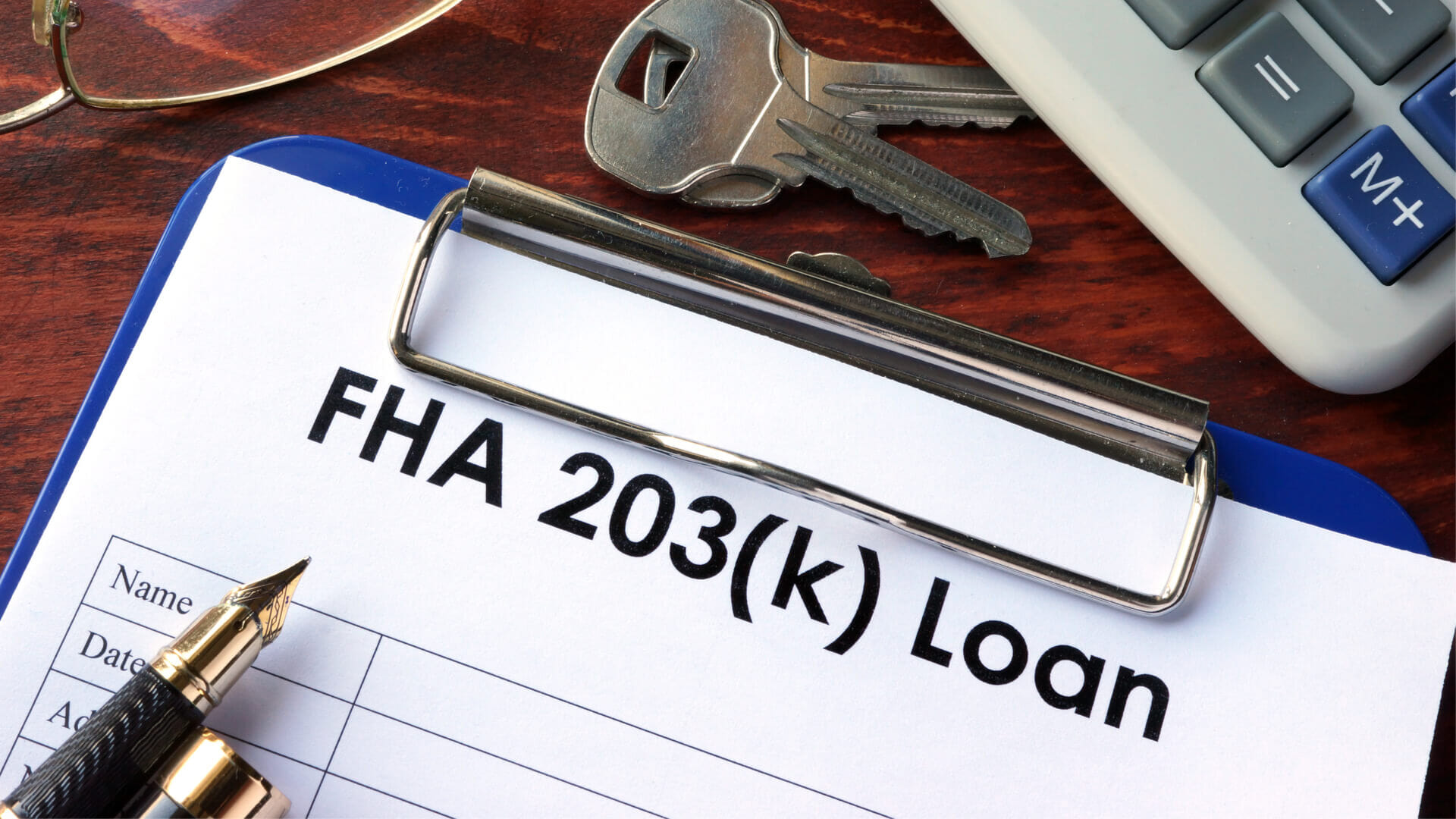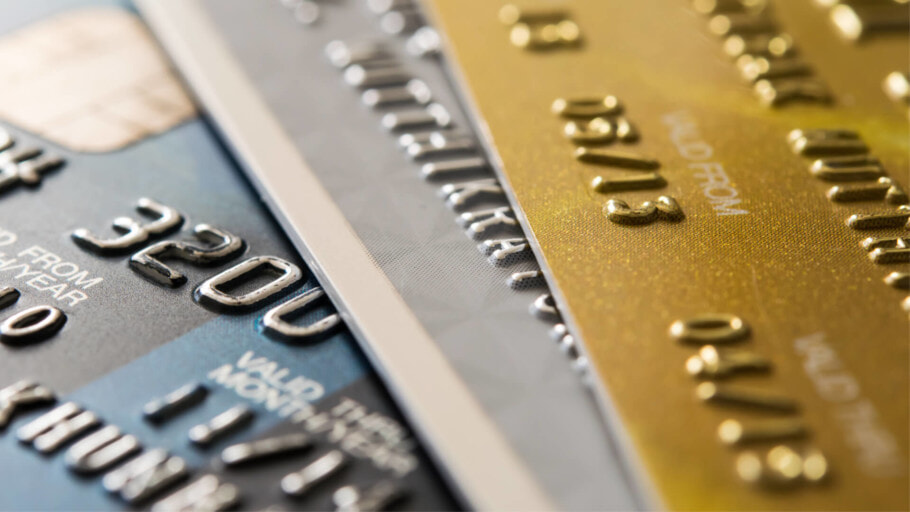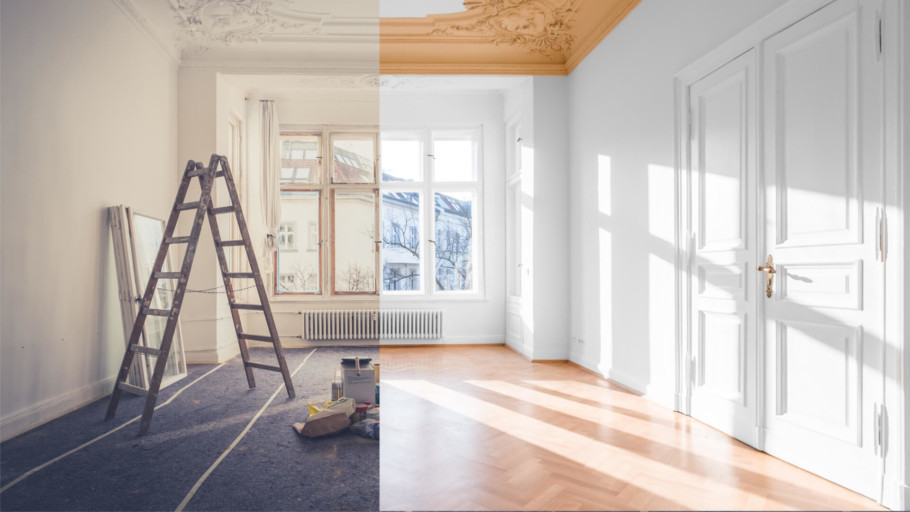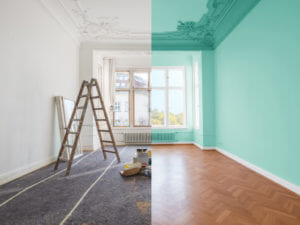Home Improvement Financing Options
We all have an idea of what our ideal home looks like, from the color scheme to a state of the art kitchen and bathroom. Remodeling your home increases the sense that you have made your mark on the property, and it gives you a feeling of pride.
A remodel could also increase the value of your home significantly.So why aren’t we all doing it? It usually comes down to cost, because remodeling isn’t cheap. Let’s look at some numbers:
- According to HomeAdvisor, the average price of a kitchen remodel in the U.S. ranges from $12,000 to $30,000, which equates to a staggering $150 per sq ft.
- The cost of hiring an experienced handyman could be as high as $390 per hour.
- The average cost of a bathroom upgrade could be as high as $15,000, but depending on the quality of the fixtures, it isn’t uncommon for that figure to rise above $50,000.
Remodeling is not a cheap process, and not everyone has the luxury of savings or cash to finance the improvements. What other financing options might be available to fund your remodel? In this article we take a look at the options.
Cash-Out Refinancing

Cash-out refinancing is a mortgage refinancing option where the new loan is higher than the old loan, allowing you to convert that difference into cash equity. You can then spend the money on anything you like. Often, you will have to get an independent valuation to determine the market price because the loan is based on the value of your home.
The Advantages of Cash-Out Refinancing
- You dictate what you spend the money on – You don’t have to justify what you spend it on, or draw up a schedule of works and materials, or give a detailed, inflexible cost base before they grant you the funds.
- More favorable terms – Often the terms of the new loan are more desirable than the terms of the old arrangement, enabling you to reduce the time frame of paying down the debt.
- Better interest rates – The interest rates are typically more favorable than on the previous loan.
The Disadvantages of Cash-out Refinancing
- Changing interest rates – The U.S. has recently raised interest rates by 0.25 percent to 2.5 percent. If the upward trend continues as the economy grows, that could be bad news for you.
- Refinancing limits – The amount the lender will refinance is based on the value of your property and the existing loan. Most lenders adopt 80 percent as the benchmark Loan To Value (LTV).
The Fannie Mae Homestyle Loan

Officially the Federal National Mortgage Association, or FNMA for short, Fannie Mae loans are part of the secondary mortgage market where loans and servicing rights are traded between lenders and investors. This network enables lenders to recoup their money quicker than waiting for the loan repayment term to mature, giving them the liquidity to offer more loans.
Fannie Mae is a vehicle for freeing up cash for banks and credit unions so that they can keep offering loans back to the market. Fannie Mae is responsible for creating an estimated $5 trillion since 2009.
The Advantage of a Fannie Mae Homestyle Loan
- Reduced down payment – Some down payments can be as low as 3 percent.
- Borrow up to 75 percent of the value of the home – This figure is based on the value after the work have been completed.
- Relaxed spending – While some lenders dictate what you can and can’t spend the money on and may make suggestions that better suit their requirements, Fannie Mae Homestyle loans offer no such restrictions.
The Disadvantage of a Fannie Mae Homestyle Loan
- The secondary mortgage market – The secondary mortgage market is susceptible to private investors setting higher interest rates, especially if you are a potential risky borrower.
- Primary residence – You can only renovate your primary residence to qualify.
- No multi-unit residences – You are forbidden from refinancing multi-unit properties like apartment blocks.
- No handyman – Licensed contractors must complete all renovation or remodeling work.
- Mandatory detailed schedules – All work has to be predetermined before the action starts, making the process inflexible should you seek changes.
- Lousy credit score – Fannie Mae Homestyle loans penalizes lower credit scores with higher interest rates.
203K Loans

203K loans are regulated by the Federal Housing Administration (FHA), which, since its inception in 1934, has been helping homebuyers with low to middle incomes that have typically poor credit scores to purchase, renovate, and refinance their property.
FHA loans are very similar to Fannie Mae options, however there is one critical difference: The FHA’s primary concern is not punishing those with bad credit or missed payments on mortgages due to hardship.
The Advantages of 203K Loans
- Credit score – The 203K allows for a more relaxed approach to anyone with less than favorable credit scores.
- Borrow 110 percent of the value – There is the scope to borrow more than other schemes because the threshold is 110 percent after the home improvements, or if you like, you can work on 110 percent of the current value of the property before the remodel.
- Multi-unit properties – The 203k loan allows for the renovation of up to a 4-unit property as long as you intend to reside in one of the units as your primary residence.
- Low down payment – Like the Fannie Mae, for some eligible borrowers, the down payment could be as low as 3.5 percent.
- Less home equity – The 203k loan requires there to be less equity in the property in order to lend.
The Disadvantages of 203K Loans
- Mandatory detailed estimates – Before you are approved, you must provide an accurate estimate of work, including the materials to be used.
- Amount limits – There are limits to the total amount you are allowed to borrow for single-family dwellings. The upper limit is dependent on the cost of real estate where you are in the country but is capped at $625,000.
- Stricter property eligibility criteria – Homes must pass an inspection to ensure there are no structural problems or potential hazards.
- Contingency fee – Older homes may need up to 20 percent as a contingency fee to be factored into the cost of the home improvement breakdown.
- Primary residence – You are only eligible if the home in question is your primary residence.
- No luxury items – 203K loans won’t fund things like swimming pool installations.
- Insurance commitments – They dictate that if you are putting less than 10 percent down as a down payment, you are obligated to take out their mortgage insurance for the lifetime of the loan, unlike other lenders that have a threshold of 20 percent equity before the cancellation of the policy is allowed.
- Mortgage insurance – Mortgage insurance is mandatory requirement for all FHA loans. There is an upfront premium of 1.75 percent as well as an annual premium paid as part of your mortgage payments. These additional payments severely dent the cost-effectiveness of the FHA loan when compared to other lenders.
Home Equity Loan
Home equity loans are a popular choice with homeowners for freeing up cash. There has been a drop in loans since the property crash, but with the recovery in house prices, they remain one of the favored choices when financing a remodel. These loans typically included an interest rate of between 3.72 to 4.27 percent depending on the term and amount you want to borrow.
The Advantages of Home Equity Loans
- Tax advantages – The interest on a home equity loan is tax deductible.
- Low closing costs – The closing costs on a home equity loan are less than other secured loans; in some cases they are non-existent.
- Lower interest rates – Compared to credit cards or personal loans, the rates are very competitive.
- Unrestricted spending – Unlike the strict rules of the 203K, a home equity loan is yours to spend on what you like without having to justify the cost.
- Easier to get – Because the lender is interested in the amount of equity you have, the guidelines for obtaining the loan are more relaxed, meaning that bad credit may not be an obstacle.
- Longer repayment length – Typically, equity loans are repaid over a 15 to 30-year period, meaning you can spread the cost to make it more affordable.
The Disadvantages of Home Equity Loans
- Your home is at risk – Because the loan is secured against your home, if you fall behind with the repayments, you could lose your property.
- Borrow more than you need – Lenders often set a minimum amount you can borrow, so while you may only want $10,000, you could end up with double that amount to satisfy the lenders criteria.
- Easy to overspend – With all this readily available cash to spend, you could become lulled into a sense that it is on tap and a never-ending source of money.
Unsecured Loans

After the recession, lending on unsecured loans dried up because they were a high risk to lenders, especially in a volatile market. The good news is that they have seen a resurgence with the improving economy. Now more than ever, lenders are willing to issue unsecured loans, not just to those with impeccable credit ratings, but also to those on lower income scales and with less than perfect scores.
The Advantages of Unsecured Loans
- No home equity required – There are no down payments. All the capital comes from the lender.
- Your home is not at risk – Even if you fail to repay the debt, there is no risk of foreclosure as the loan is unsecured.
- Quick decision – Most loan decisions are turned around in 3 to 5 days, meaning the money is in your account quickly so there are no delays with starting the remodeling work.
- Lower rates – The rates on an unsecured loan, while less favorable than secured loans, are much better than credit card rates.
The Disadvantages of Unsecured Loans
- Costly – If you have weak credit, then an unsecured loan may be expensive.
- Shorter repayment length – Typically, the average unsecured loan has a duration of between 5 and 10 years, with many repayable over a considerably shorter timescale.
- Not tax deductible – Unlike home equity loans, unsecured loans are rarely tax deductible.
Credit Cards

30 percent of homeowners say that they plan a home improvement financed by plastic, especially with millennials, although there has been a recent 16 percent decline.
If used responsibly, credit cards are mighty financial aids, giving you far more economic clout than you might otherwise have had, but irresponsible use reaps some severe harm, costing far more than the convenience of them in the first place.
The Advantages of Using a Credit Card
- Rewards – Most credit cards offer a rewards program with benefits that come from responsible use. The catch is that the balance must be zero at the end of every month.
- Quick fix – If you need instant funds for an emergency repair, credit cards are excellent tools.
- Payment protection – Credit card companies realize that you are most likely to use plastic for more significant purchases, so to entice you, they offer free money back insurances against many things, like holidays, furniture, and weekend breaks.
- Short term loans – Because the items you buy with a credit card get billed monthly, it offers a means of delaying the payments in the short term, just like a loan, until you have the funds to cover the cost.
The Disadvantages of Using a Credit Card
- Hidden fees or costs – Often inducements like zero percent fees can seem like they are too good to be true, and they usually are. Watch out for 3 percent balance transfer fees, and check the small print to ensure that they haven’t loaded the interest rates to compensate for the zero charges.
- Pre-approval – Beware of baiting pre-approval letters telling you that should you apply for a credit card, it is a done deal. Often, when you do enquire, they change the tone swiftly to tell you that you don’t qualify for their introductory offers and charge you a higher rate.
- Introductory periods – Be aware of the increase in charges after any promotional periods have expired. Often, these increases are significant.
- Don’t miss payments – Nothing harms your credit score more than missed or late payments on a credit card. Worst of all, it could drag you into a cycle of poor credit, meaning that your only option for obtaining funds in the future is the credit card that trapped you in the first place.
Final Thoughts
There are many methods of financing the remodel that you so desperately want, with some more favorable than others. Whichever you choose depends on your circumstances and the scale of the improvements you want to make.
A credit card isn’t going to be a cost-effective route if you plan on spending $50,000 on a kitchen and bathroom remodel, just as an equity loan isn’t going to be suitable for a $5,000 redecoration project.




